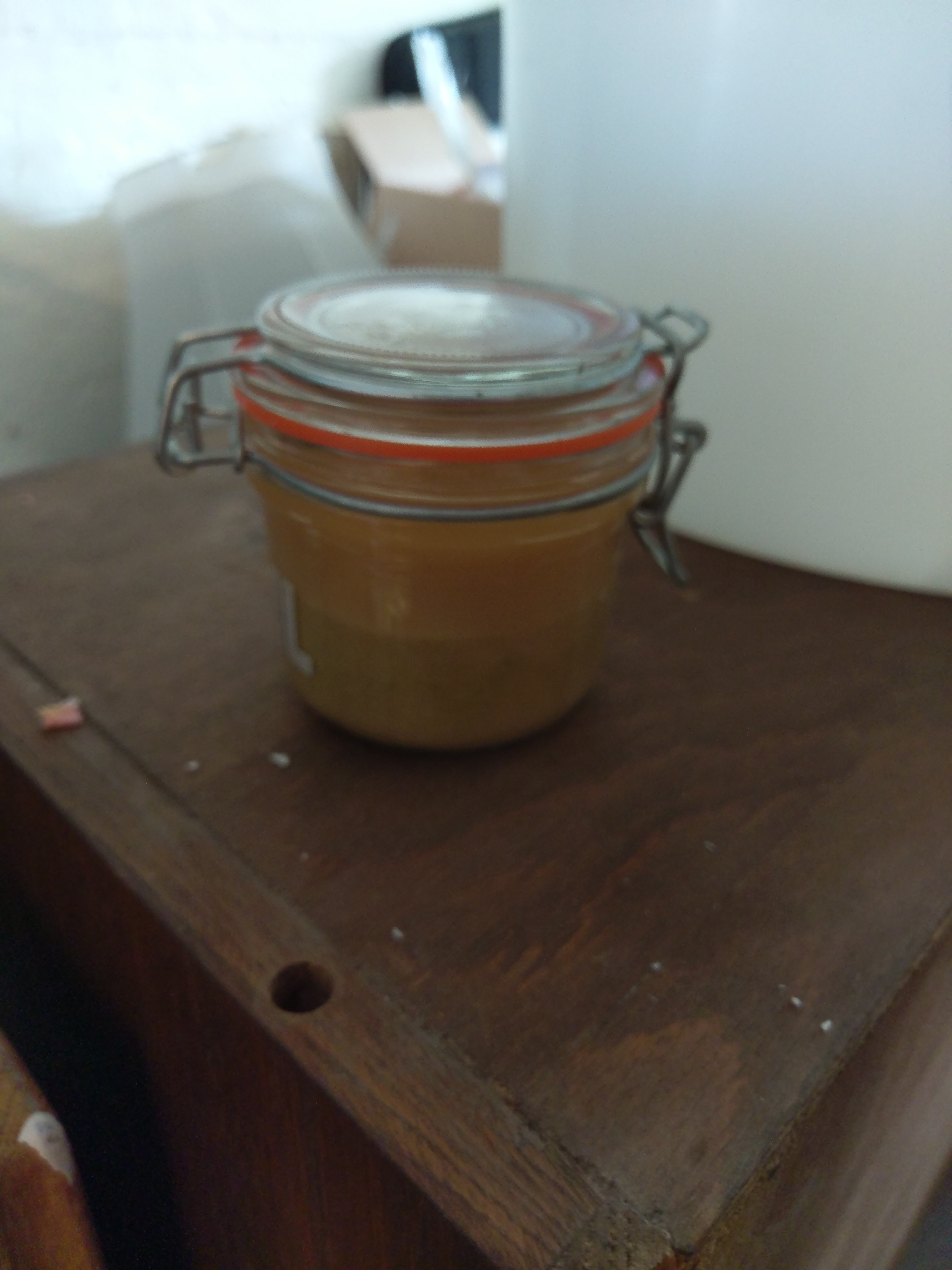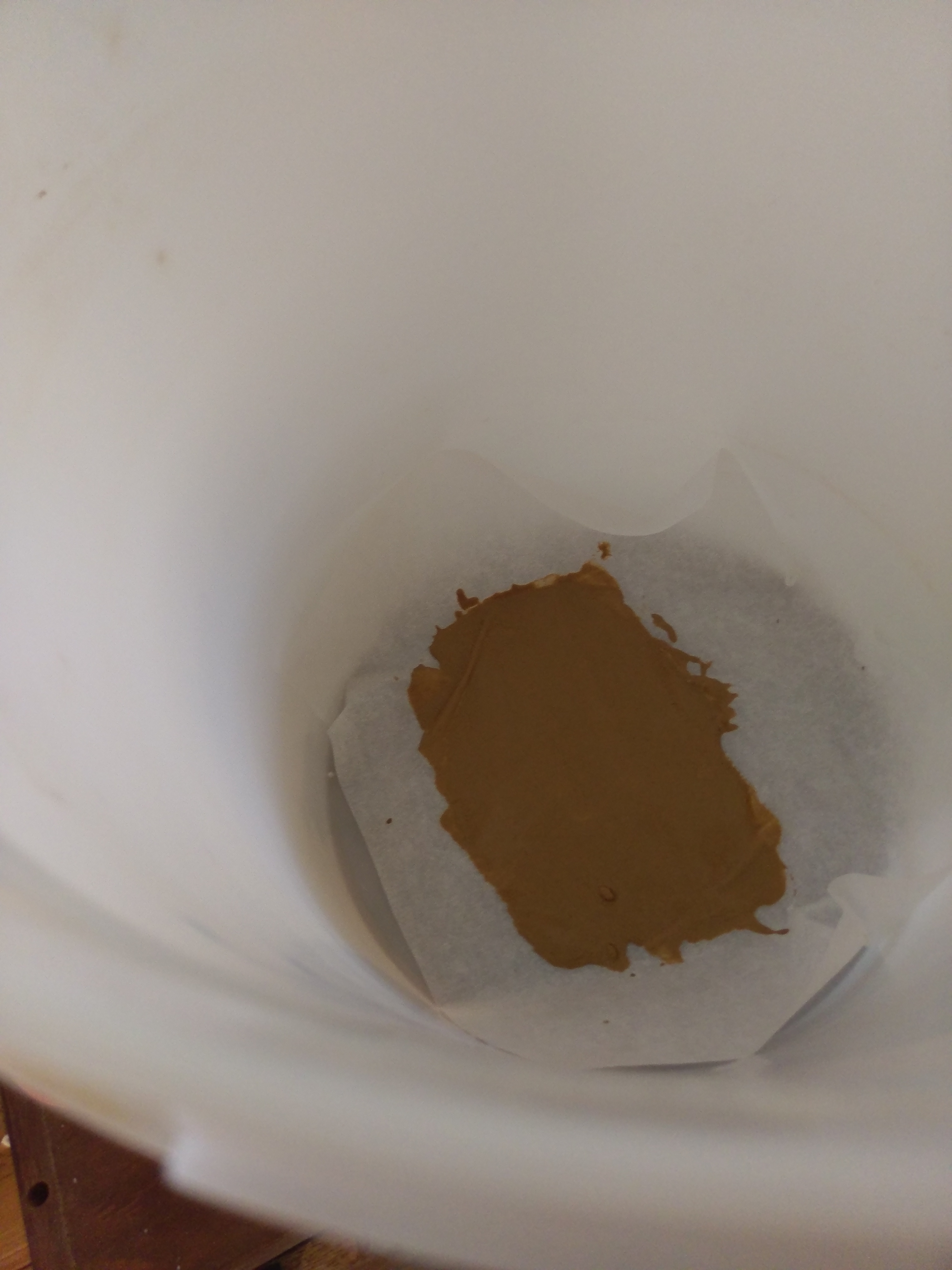I'm about to start this experiment. I have a roughly 60 quart airtight box that I've sprayed with star san and let air dry. I plan to put the parchment paper and a porcelain plate in the oven for about an hour at 400F (the parchment paper is rated to 420F), which should (I hope) kill anything on it. I'm presently separating the yeast cream from the "beer" from a fresh Omega Hothead packet, which I've poured into a star san sanitized beaker, and that separation is happening in the refrigerator. I have two fresh desiccant canisters that I'll be putting in the box before sealing it up. They haven't been sanitized per se, but I don't plan for there to be a breeze inside the box. I'll also put a non-sanitized humidity sensor in the box to report on humidity levels. It can't measure below 10% humidity, but it's what I currently have available.
Once the cream separates from the beer, I'll spread some of it on the sanitized parchment paper supported by the plate, move it to the box, and seal it all up for the yeast to dry at room temperature.
Sound good?
Once I'm sure the yeast is dry, I'll test it for re-animation using GoFerm to see if it behaves as good and ferments as well as the liquid yeast that made it.
I hope the above will be good enough to avoid contamination. If this fails, then the next step might be to sanitize the desiccant pellets in the oven at 220F (maybe I could go a little higher, but it melts at 325F) before adding them directly to the box with no canister, and perhaps using a smaller sealed box but keeping the whole thing refrigerated to 35F during the drying process. Doing that might help reduce bacteria multiplying on the cream during the drying process. And, if that doesn't work, then I don't know what will. The only contamination source I can think of would be airborne particles, which hopefully will be small in number compared to the yeast population that's being dried. I suppose the big vulnerability is multiplying wild organisms on the yeast cream while it dries. So, to close that window of vulnerability, finding a faster way to dry might be worth looking into if this first attempt fails. Perhaps a cylinder of dry, food grade CO2 blown over it would considerably speed up the rate of drying without costing much. I'd prefer something cheaper though: maybe an aquarium pump, which first pumps its air through desiccant and then through a sanitary filter before being blown over the yeast cream would work as well. All this requires additional work to set up though, which is why I'm leaving it out of this first test. With luck, I won't need to take these extra "Plan B" steps.


































![Craft A Brew - Safale BE-256 Yeast - Fermentis - Belgian Ale Dry Yeast - For Belgian & Strong Ales - Ingredients for Home Brewing - Beer Making Supplies - [3 Pack]](https://m.media-amazon.com/images/I/51bcKEwQmWL._SL500_.jpg)

























